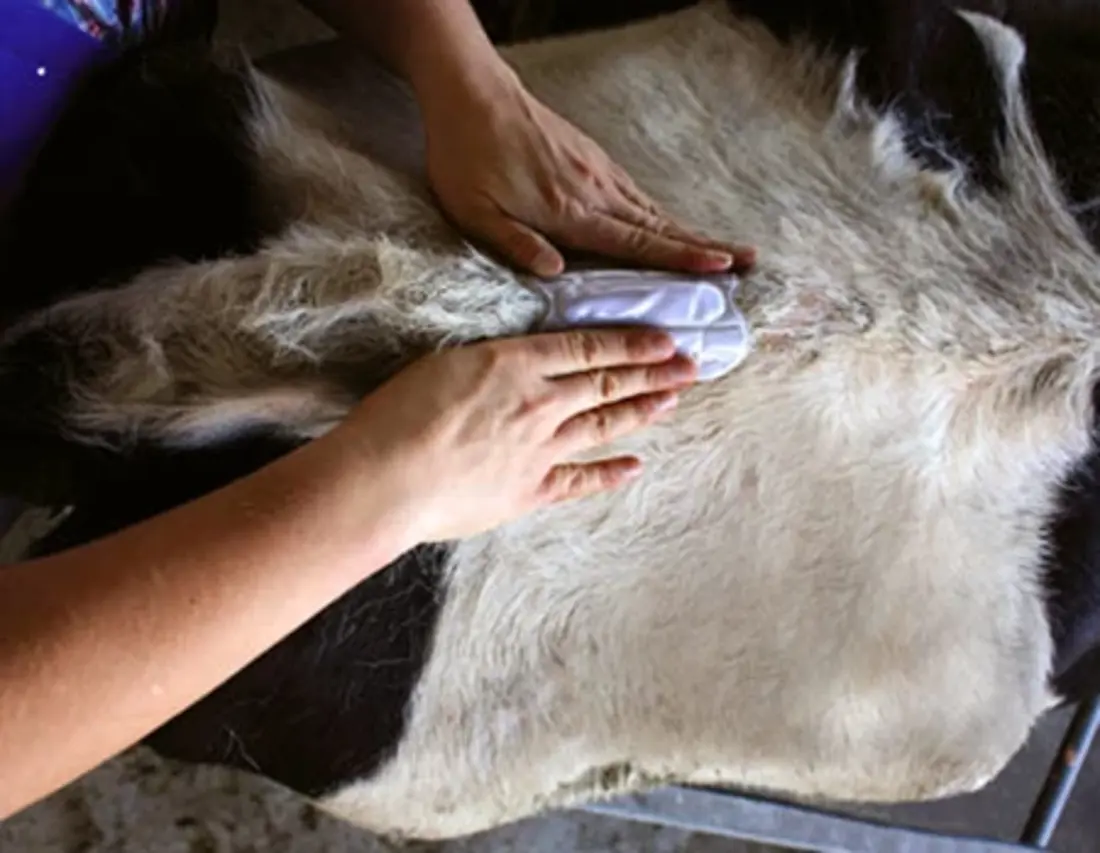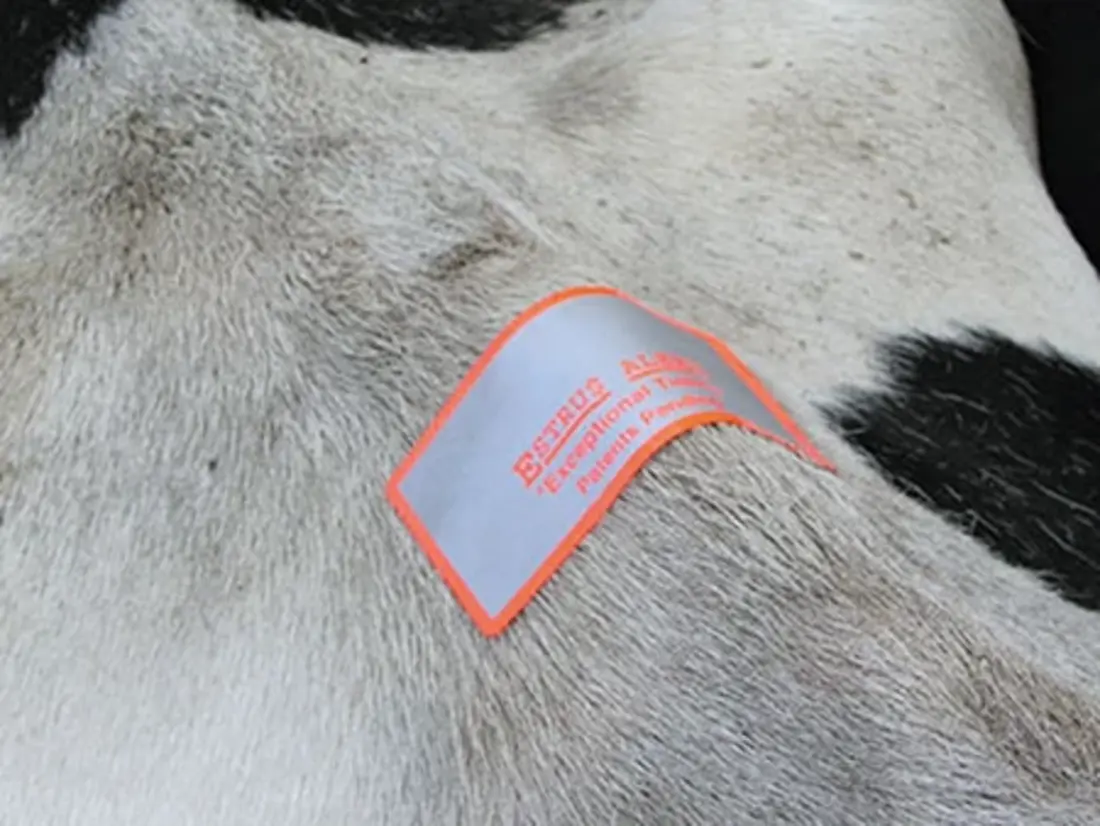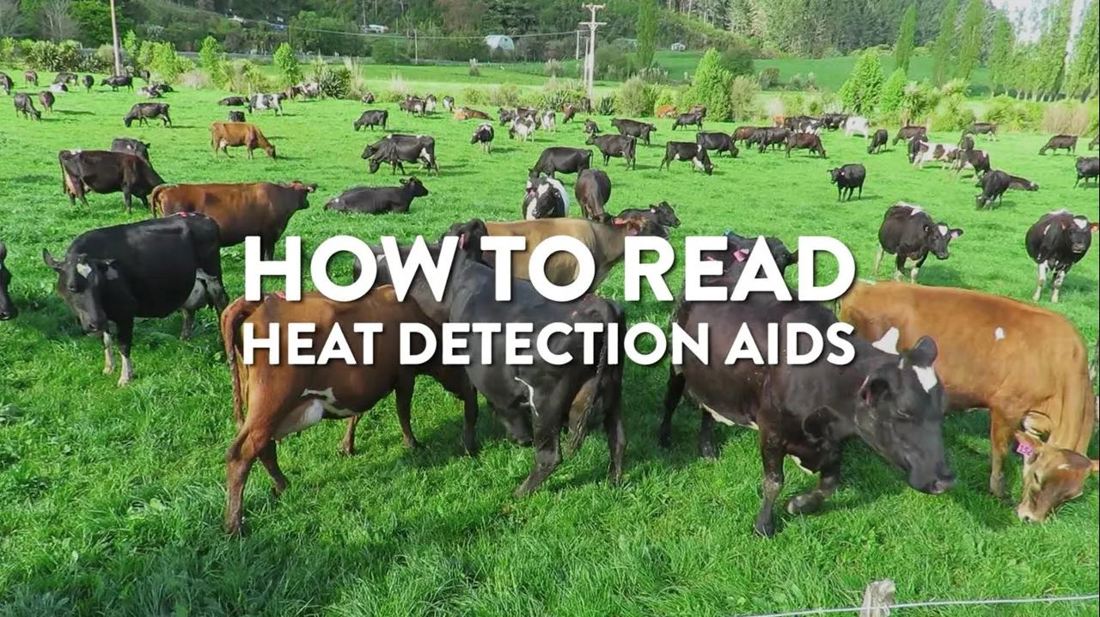Using Heat Detection Aids
8 min read
Using heat detection aids efficiently will help ensure a successful mating period on your dairy farm. There are different heat detection aids for cows, including tail paint, heat mount detectors, electronic heat detection, and vasectomised bulls. There are benefits to using the varying aids, but using a combination will help you to read cows’ heat signs as effectively as possible.
An effective use of heat detection aids will help ensure a successful mating period. There are several options and innovations available to aid heat detection and increase heat detection rates. Each cow must have a unique number to be readily and accurately identified. Determine which of the following options will suit your heat detection strategy. Remember, for the best results use a combination of aids and paddock observation.
Correctly used, tail paint is an inexpensive and effective aid for people detecting heat. It is possible to achieve high heat detection rates using tail paint alone, provided the person using it is highly skilled and the paint is maintained appropriately.
A strip of tail paint is applied to the rear portion of the backbone of each cow. Cows on heat will stand when mounted by herdmates or a bull, and the tail paint will be gradually rubbed off as the other animal dismounts.
How to apply tail paint
Considerations for using tail paint
How to use tail paint efficiently
For cows on heat, re-check that the tail paint has been rubbed immediately before each cow is inseminated. This will help avoid inseminating cows that are not on heat (e.g. drafting errors).
Reapply tail paint to recently inseminated cows once the cow has gone off heat – generally at the next milking. Use a different coloured paint on cows after their first insemination. This will help identify cows that have not yet been inseminated, and this helps you decide whether to inseminate a cow that is showing only weak signs of heat.
InCalf research has shown that using heat mount detectors can result in higher detection rates than tail paint alone, particularly in herds where less skilled or unmotivated staff are checking for cows on heat. Best results are achieved when heat mount detectors are combined with paddock checks for heat.
Heat mount detectors are applied to the rear portion of the backbone or rump region of each cow. Cows on heat will stand when mounted by herdmates or a bull and the detector will respond to the pressure or rubbing from the mounting animal, becoming brightly coloured and easily recognised.
There are several types of heat mount detectors – pressure-activated ‘tubes’, scratch-off ‘patches’ and electronic devices are now available.
These devices are pressure sensitive and are activated by standing heat behaviour with a built-in timing mechanism.
Some detectors are self-adhesive and some require gluing, always follow the manufacturer’s instructions. The device is mounted on the backbone with the top of the patch roughly between the hip bones. Adjust for the size of cow and aim for position that will receive maximum pressure from the brisket of the mounting animal. Examples include Kamar®, LIC Heat Patch, LIC Heat Patch Plus, Bulling Beacon, Heat Seeker Heat Detector.

Pressure activated heat mount detector
These devices have a silver surface that is gradually rubbed off with each mount, revealing the colour underneath.
Self-adhesive generally but some gluing may be required - always follow the manufacturer’s instructions. The patches are mounted across the backbone, roughly between the hip and tail head.
Examples include Estrotect™, Bulls-i, ScratchE Heat Detector.

A scratch-off heat mount detector
These are touch sensitive and contain a microchip. They analyse mounting behaviour and look for specific patterns of riding activity such as frequency, number and length.
They require gluing to apply and sit adjacent to tail ridge. They have been designed to stay on across multiple heats within a single season.
Examples include Gallagher FlashMate®.
Increase the understanding and confidence of your team with these simple tips.

Video 1:47 min
There are a variety of electronic heat detectors in cameras and activity meters.
The heat detection cameras ‘read’ heat from heat mount detectors. The camera systems work in conjunction with drafting systems, so both need to be installed to use the product.
Activity meters are electronic transponders that detect movement and can be attached to the cow’s leg, in an ear tag, or hung around their neck. They record cow movement as cows on heat typically walk more as they are restless, mounting and being mounted by other cows.
The amount of activity is compared to previous days to identify spikes in activity and 'identify' heat. Some brands compare cow activity to the rest of the mob on the same day, and rumination is included in some technology. This can be adjusted for days where there might be a long walk to a back paddock. Check the reliability and durability of this technology before you purchase it, and talk to other farmers with the system to discuss strengths and weaknesses.
Automated technologies are an aid to heat detection, but they do not directly diagnose cows in heat. When a cow is in heat, she becomes increasingly restless and this change in activity can be monitored by a motion sensor attached to the cow. Most automated heat detection systems work by monitoring changes in these patterns of cow movement.
The monitoring device is attached to the cow by a leg strap, in an ear tag, or a neck collar (which may be weighted to keep the device in position).
The simplest sensors have a ball or mercury switch inside a chamber that moves from side to side creating a total activity count. More advanced sensors measure both the direction and the intensity of movement in three different planes: side to side, up and down, and front to back.
Cow motion is monitored multiple times per second to help identify different activities such as lying, standing, mounting, walking, or grazing. The sensor sits inside waterproof housing that also includes a battery, a miniature processor for processing the data, a memory device for temporary data storage (usually up to 24 hrs), and a data transmitter.
Automated heat detection systems deliver the most value when the herd manager is motivated to make the system succeed. Some investment in time is needed to actively manage the technology and correctly interpret the data. Cows that are flagged as being on heat only by their activity data require further investigation to determine if they are in fact in heat, so it is essential that your stockpeople are properly trained in the use of the system.
The time needed to install an activity meter system will depend on the size of the herd, the type of system being set up and the number of receivers required. In general, most herds can install a system in one full day. Set up will involve:
Some systems operate using a custom terminal, avoiding the need for a computer and software.
Consideration will need to be given to the available labour, health and safety risks and facilities required for handling cows to attach sensor devices. If power is not already available at the site of the receivers then this may need to be arranged prior to the day of installation. A suitable computer and office area may need to be set up near the dairy if one does not already exist.
A functional internet connection to the dairy computer may also be required.
Vasectomised bulls may help identify cows on heat along with other heat detection aids. It is important to have enough bulls so that bulls are not overworked and injured or that they only ride cows with strong heats.
There is an expense to buying the bulls and feeding them and keeping vasectomised bulls on farm increases health and safety risks.
Now’s the perfect time to check in, plan, and set up for a strong season. We’ve pulled together smart tips and tools to help you stay ahead all winter long.
Whether you prefer to read, listen, or download handy guides, we’ve got you covered with trusted tools to support your journey every step of the way.
Put our proven strategies and seasonal tools to work. Boost production, support animal health and watch your profits hum.
Tools that are backed by science, shaped by farmers and made for this season.
That’s Summer Smarts.